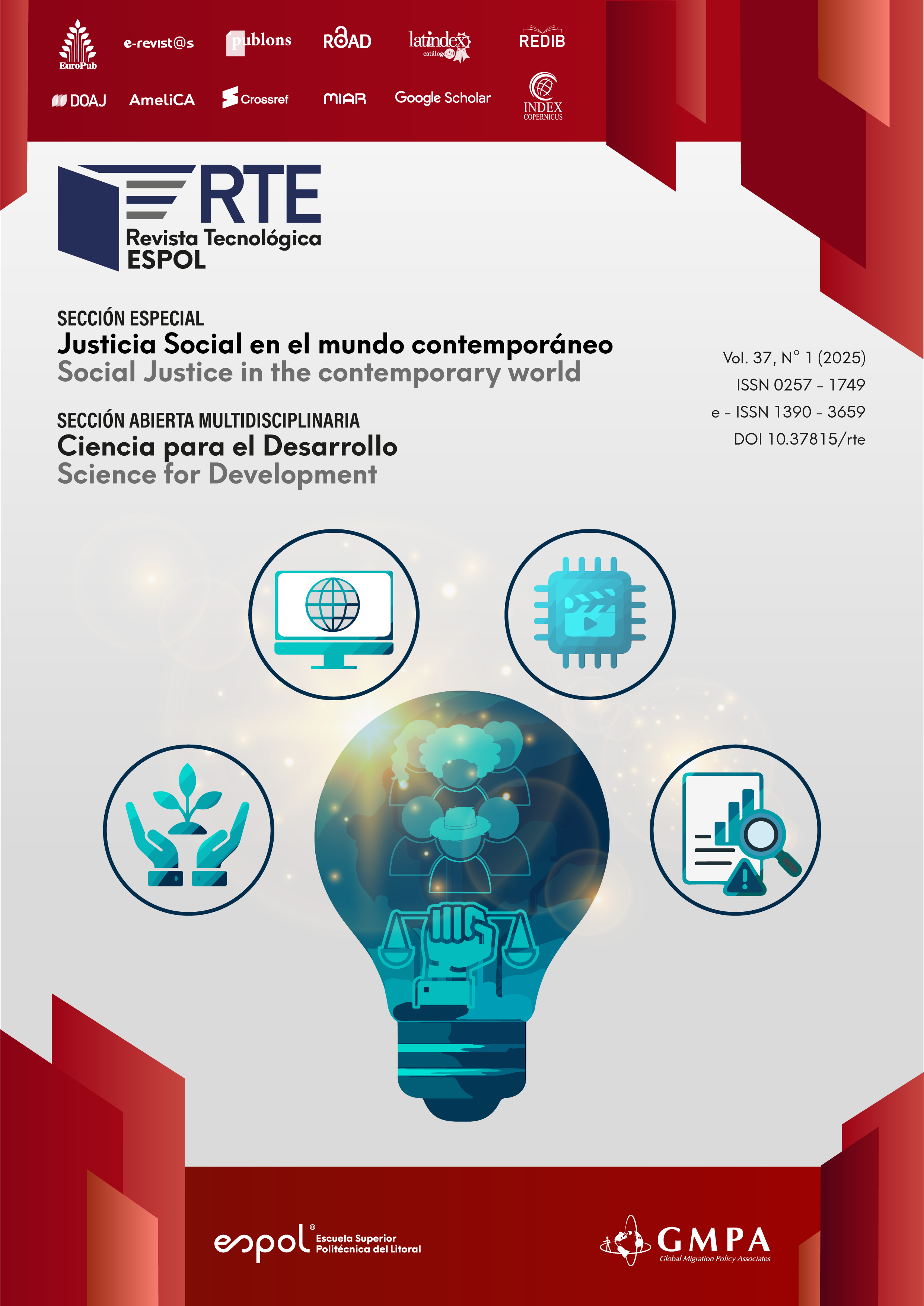La morosidad representa un obstáculo estructural para la sostenibilidad financiera de las empresas públicas de distribución eléctrica; sin embargo, a diferencia del sector financiero, aún no se han adaptado modelos predictivos basados en aprendizaje automático a este contexto. En particular, CNEL EP enfrenta dificultades para anticipar el incumplimiento de sus clientes, lo cual limita la eficacia de su gestión comercial. Ante esta problemática, el presente estudio tiene como objetivo determinar el modelo de aprendizaje automático más preciso para predecir el riesgo de morosidad en la Unidad de Negocio Bolívar. Para ello, se adoptó un enfoque metodológico basado en Design Science Research y CRISP-DM, el cual permitió integrar una revisión sistemática de literatura (PRISMA), el análisis de un conjunto de 72.483 registros históricos y la aplicación de técnicas como PCA, SMOTE y modelos ensemble (RandomForest, Gradient Boosting, AdaBoost y VotingClassifier). Gradient Boosting y VotingClassifier alcanzaron métricas casi perfectas (Accuracy: 0.9982; F1 Macro: 0.9957; AUC ROC: 1.000) y (Accuracy: 0.9983; F1 Macro: 0.9959; AUC ROC: 1.000), incluso en escenarios de estrés con ruido, desbalance y pérdida de datos; además, la incorporación de SHAP y LIME facilitó la interpretación de las predicciones, garantizando transparencia para usuarios no técnicos. Los hallazgos evidencian que la solución es robusta, replicable y aplicable en la práctica. Este estudio constituye un aporte significativo al demostrar que los modelos de aprendizaje automático pueden fortalecer la gestión de cartera en el sector eléctrico público ecuatoriano.

Esta obra está bajo una licencia internacional Creative Commons Atribución-NoComercial 4.0.
Referencias
Akinjole, A., Shobayo, O., Popoola, J., Okoyeigbo, O., & Ogunleye, B. (2024). Ensemble-Based Machine Learning Algorithm for Loan Default Risk Prediction. Mathematics, 12(21), 3423. https://doi.org/10.3390/MATH12213423
Akoka, J., Comyn-Wattiau, I., & Storey, V. C. (2023). Design Science Research: Progression, Schools of Thought and Research Themes. Lecture Notes in Computer Science (Including Subseries Lecture Notes in Artificial Intelligence and Lecture Notes in Bioinformatics), 13873 LNCS, 235–249. https://doi.org/10.1007/978-3-031-32808-4_15
Alonso Robisco, A., & Carbó Martínez, J. M. (2022). Measuring the model risk-adjusted performance of machine learning algorithms in credit default prediction. Financial Innovation, 8(1), 1–35. https://doi.org/10.1186/S40854-022-00366-1
Alvi, J., Arif, I., & Nizam, K. (2024). Advancing financial resilience: A systematic review of default prediction models and future directions in credit risk management. Heliyon, 10(21), e39770. https://doi.org/10.1016/J.HELIYON.2024.E39770
Aurona, G., & Richard, B. (2023). Design Science Research for a New Society: Society 5.0. 18th International Conference on Design Science Research in Information Systems and Technology, DESRIST 2023, Pretoria, South Africa, May 31 – June 2, 2023, Proceedings, 13873. https://doi.org/10.1007/978-3-031-32808-4
Dastile, X., Celik, T., & Potsane, M. (2020). Statistical and machine learning models in credit scoring: A systematic literature survey. Applied Soft Computing, 91, 106263. https://doi.org/10.1016/J.ASOC.2020.106263
Delport, P. M. J., Solms, R. Von, & Gerber, M. (2024). Methodological Guidelines for Design Science Research. Procedia Computer Science, 237, 195–203. https://doi.org/10.1016/J.PROCS.2024.05.096
Gao, B., & Balyan, V. (2022). Construction of a financial default risk prediction model based on the LightGBM algorithm. Journal of Intelligent Systems, 31(1), 767–779. https://doi.org/10.1515/JISYS-2022-0036
Goecks, L. S., De Souza, M., Librelato, T. P., & Trento, L. R. (2021). Design Science Research in practice: review of applications in Industrial Engineering. Gestão & Produção, 28(4), e5811. https://doi.org/10.1590/1806-9649-2021V28E5811
Gregor, S. (2021). Reflections on the Practice of Design Science in Information Systems. Engineering the Transformation of the Enterprise: A Design Science Research Perspective, 101–113. https://doi.org/10.1007/978-3-030-84655-8_7
Ha, T., Xiao, D., Katsikis, V. N., Khan, H., Li, S., Zhu, M., Shia, B.-C., Su, M., & Liu, J. (2024). Consumer Default Risk Portrait: An Intelligent Management Framework of Online Consumer Credit Default Risk. Mathematics 2024, Vol. 12, Page 1582, 12(10), 1582. https://doi.org/10.3390/MATH12101582
Kim, H., Cho, H., & Ryu, D. (2020). Corporate Default Predictions Using Machine Learning: Literature Review. Sustainability 2020, Vol. 12, Page 6325, 12(16), 6325. https://doi.org/10.3390/SU12166325
Lai, L. (2020). Loan Default Prediction with Machine Learning Techniques. Proceedings - 2020 International Conference on Computer Communication and Network Security, CCNS 2020, 5–9. https://doi.org/10.1109/CCNS50731.2020.00009
Liu, J., Liu, J., Wu, C., & Wang, S. (2024). Enhancing credit risk prediction based on ensemble tree-based feature transformation and logistic regression. Journal of Forecasting, 43(2), 429–455. https://doi.org/https://doi.org/10.1002/for.3040
Montevechi, A. A., Miranda, R. de C., Medeiros, A. L., & Montevechi, J. A. B. (2024). Advancing credit risk modelling with Machine Learning: A comprehensive review of the state-of-the-art. Engineering Applications of Artificial Intelligence, 137, 109082. https://doi.org/10.1016/J.ENGAPPAI.2024.109082
Mujo, A., Nikolla, S., Hoxha, E., & Pelivani, E. (2025). Explainable AI in Credit Scoring: Improving Transparency in Loan Decisions. Journal of Information Systems Engineering and Management, 10(27s), 506–515. https://doi.org/10.52783/JISEM.V10I27S.4437
Qin, C., Zhang, Y., Bao, F., Zhang, C., Liu, P., & Liu, P. (2021). XGBoost optimized by adaptive particle swarm optimization for credit scoring. Mathematical Problems in Engineering, 2021. https://doi.org/10.1155/2021/6655510
Ren, H. (2025). Machine Learning-Based Prediction of Customer Churn Risk in E-commerce. Advances in Economics, Management and Political Sciences, 153(1), 47–52. https://doi.org/10.54254/2754-1169/2024.19473
Rios, S. B., & Arbeláez, D. H. (2023). Construcción de un modelo para predecir la morosidad de cartera. Cuaderno Activa, 15(1). https://doi.org/10.53995/20278101.1229
scikit-learn.org. (n.d.-a). 3.1. Cross-validation: evaluating estimator performance — scikit-learn 1.6.1 documentation. Retrieved May 4, 2025, from https://scikit-learn.org/stable/modules/cross_validation.html
scikit-learn.org. (n.d.-b). 3.2. Tuning the hyper-parameters of an estimator — scikit-learn 1.6.1 documentation. Retrieved May 4, 2025, from https://scikit-learn.org/stable/modules/grid_search.html
Shahid, A., Hussain, M., & Iqbal, A. (2023). Machine Learning Based Improved Customer Churn Prediction Model for Telecommunications Industry. 18th IEEE International Conference on Emerging Technologies, ICET 2023, 147–153. https://doi.org/10.1109/ICET59753.2023.10375037
Sheikh, M. A., Goel, A. K., & Kumar, T. (2020). An Approach for Prediction of Loan Approval using Machine Learning Algorithm. Proceedings of the International Conference on Electronics and Sustainable Communication Systems, ICESC 2020, 490–494. https://doi.org/10.1109/ICESC48915.2020.9155614
Wang, Z., Zhang, H., Wang, J., Jiang, C., He, H., & Ding, Y. (2025). Forecasting time to risk based on multi-party data: An explainable privacy-preserving decentralized survival analysis method. Information Processing and Management, 62(1). https://doi.org/10.1016/j.ipm.2024.103881
Xu, T. (2024). Comparative Analysis of Machine Learning Algorithms for Consumer Credit Risk Assessment. Transactions on Computer Science and Intelligent Systems Research, 4, 60–67. https://doi.org/10.62051/R1M3PG16
Yemmanuru, P. K., Yeboah, J., & Nti, I. K. (2024). Customer Credit Risk: Application and Evaluation of Machine Learning and Deep Learning Models. 2024 IEEE 3rd International Conference on Computing and Machine Intelligence, ICMI 2024 - Proceedings. https://doi.org/10.1109/ICMI60790.2024.10585896
Zhang, L., & Wang, L. (2023). An Ensemble Learning-Enhanced Smart Prediction Model for Financial Credit Risks. Https://Doi.Org/10.1142/S0218126624501299, 33(7). https://doi.org/10.1142/S0218126624501299







